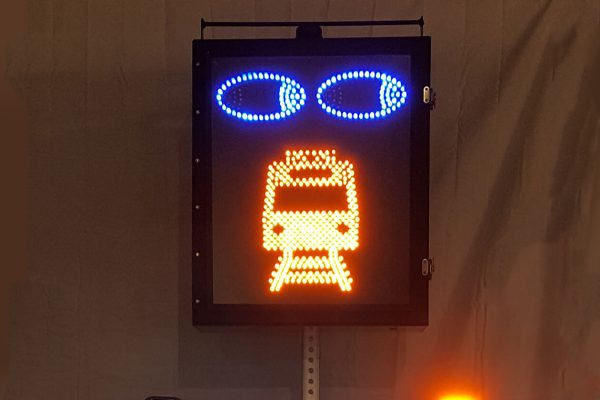Railroad Crossing Signs for Every Environment
Railroad crossings are a vital part of transportation infrastructure, ensuring safe interactions between vehicles, pedestrians, and trains. But not all crossings are created equal. Though you might not expect it, the design, placement, and technology of railroad crossing signs vary significantly depending on the environment. Whether it’s a dense urban area, a quiet suburban street, or a rural road, each situation calls for different railroad crossing signs. Yet, you may be wondering: how are the signs different for each area, and why? After all, a sign is just a sign right?
Well, there’s actually a surprising number of differences in signage for every environment. This month, we’re exploring how railroad crossing signs differ in urban, suburban, and rural areas.
Urban Railroad Crossings
Urban areas are characterized by high traffic volumes, both vehicle and pedestrian. These crossings often occur near schools, businesses, intersections, and public transit routes. In these settings, visibility and control are critical. That’s why urban railroad crossings typically feature a combination of active warning systems, including flashing lights, gates, bells, and sometimes traffic signal integration.
In dense cities, signage must also compete with visual clutter, so LED-enhanced signs and clear pavement markings are commonly used to grab attention. Pedestrian-specific signage and barriers may also be installed to prevent foot traffic from entering tracks when a train is approaching. Urban crossings demand high-tech, multi-sensory warnings to ensure that everyone—drivers, cyclists, and pedestrians—can respond quickly and safely.
Suburban Railroad Crossings
Suburban crossings tend to be in residential or light commercial areas, where vehicle traffic is moderate and pedestrian use varies. Here, a mix of passive and active warning systems is often used depending on the specific risk level of each crossing. Crossbuck signs, yield or stop signs, and pavement markings are common in lower-traffic zones, while flashing lights and gates are added in higher-risk areas or those with frequent train activity.
Suburban areas may also require signage that’s tailored to school zones or nearby recreational areas. Reflective materials are often used to increase nighttime visibility, and warning signs may be paired with advance notice signage to give drivers time to prepare. The key in suburban environments is balancing effectiveness with the neighborhood aesthetic and traffic flow.
Rural Railroad Crossings
In rural areas, railroad crossings can be particularly dangerous due to limited visibility, higher vehicle speeds, and fewer active warning systems. These crossings often rely on passive signage like crossbucks, stop signs, and advance warning signs, especially on less-traveled roads. Because rural drivers may be unfamiliar with the area or driving long distances at high speeds, early notification is essential. That’s why we recommend:
- Highly reflective materials
- Clear placement of signage
- Solar panel-powered flashing lights (if possible)
If you get a variety of temperatures and weather events each year (such as snow, rain, and sunlight), then we also recommend rugged construction and weather-resistant coatings to ensure your signs hold up in all types of environmental conditions.
Customized Solutions for Safer Crossings
Every railroad crossing presents its own challenges. Since every different railroad crossing is unique, it’s essential that you have the right tools and expertise you need to make sure your motorists and pedestrians stay safe around your community’s railroads for years to come. For expertly designed railroad signs, click here to contact our team for more information.

